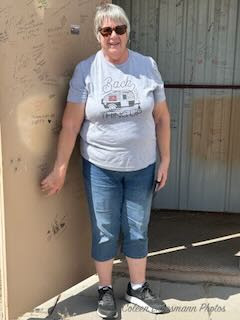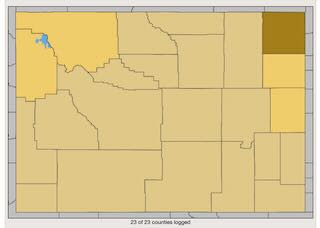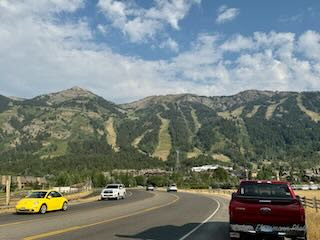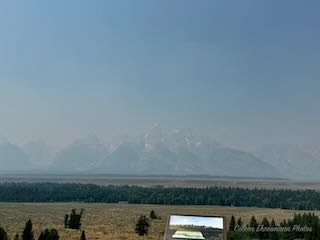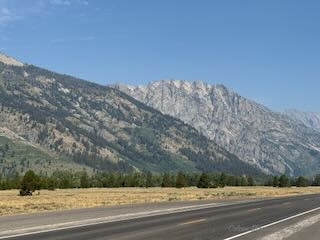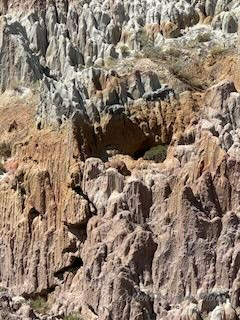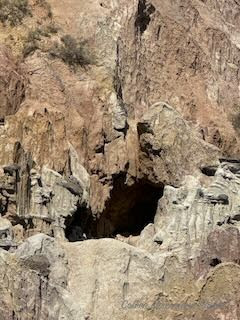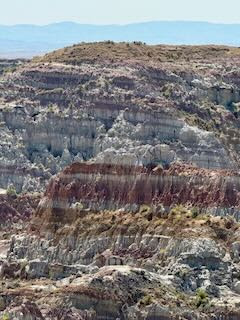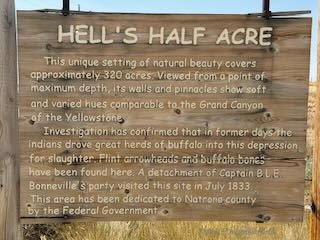On our drive from Jackson to Casper, we came upon the most amazing geological phenomenon, because of geocaching.
There is only a little sign along the highway and this sign at the entrance. It would be very easy to miss, or just drive by not realizing what you were missing. Photos do not do justice to what we saw.
The 150-foot-deep gorge, and the badland features were created through differential erosion by wind, gravity and intermittent streams flowing south into South Fork of Powder River. The gorge consists of layers of claystone, siltstone and sandstone.
Erosion over millions of years is responsible for the unique landscape of unusual features of hoodoos and pinnacles.
It looked like black foam was resting on the top of the pinnacles. So interesting!
A closer photo of the black foam, but it still doesn't show what I saw.
The floor of the canyon was white.
Encompassing 320 acres, this geologic oddity is composed of deep ravines, caves, rock formations and hard-packed eroded earth. Hell's Half Acre was used as the location for the fictional planet of Klendathu in the 1997 movie Starship Troopers. ~ Wikipedia
There is evidence the Native Americans used the area for a bison jump. Bones and flint arrowheads have been found. They also drove herds of elk and deer over the cliff edge.
It was known as "The Devil's Kitchen", "The Pits of Hades", and "The Baby Grand Canyon" - terms to entice tourists to the area. A cowboy stumbling upon it thought he was in an area of alkali and bogs known as Hell's Half Acre, giving it the name that is used today.
According to the government site for Natrona County: Hell's Half Acre is a large geological formation that encompasses over 960 acres, including Castle Arch.
Being from South Dakota, I have seen the Badlands. I have also been to the Grand Canyon and most of the national parks in Utah. This little known canyon in Wyoming rates just as high (or higher) than the national parks.
The colors and the shapes...all were close enough to the edge. There was so much more area we could not see.
I see a foot holding a rabbit head wearing a hat. What do you see?
More pinnacles holding larger, heavier layers of sandstone or claystone or siltstone.
At one time there was a restaurant, motel and campground at this location. They were closed and removed in 2005 due to lack of visitors. An 8' wire fence surrounds the area. One corner of the fence was open and safe for visitors to slip through and stand on a safe ledge for more photos.
There were visible caves along the far walls.
Natrona County is the caretaker for Hell's Half Acre.
Wyoming PBS has published an episode of their series "Our Wyoming" on Hells Half Acre. The YouTube piece gives great information of the past and their hope for the future of Hell's Half Acre. (click on the episode link)





